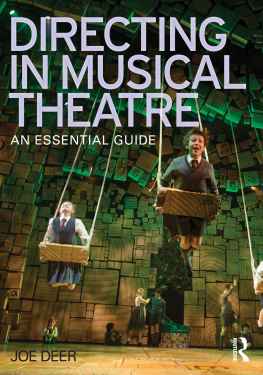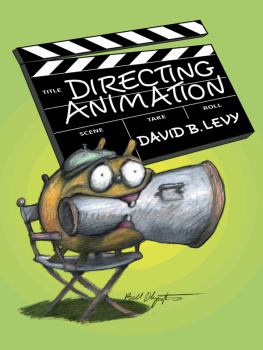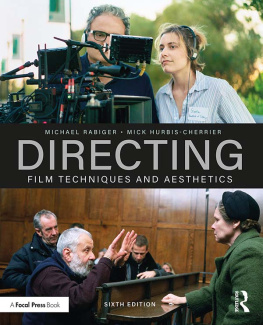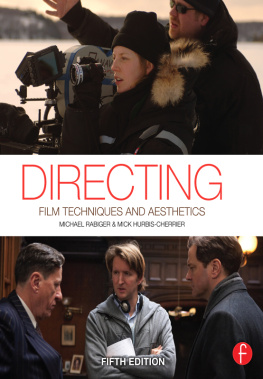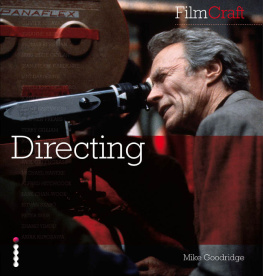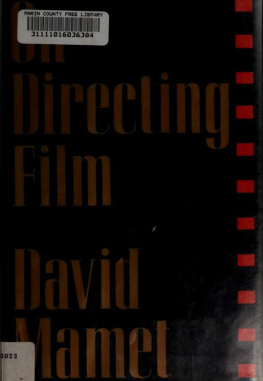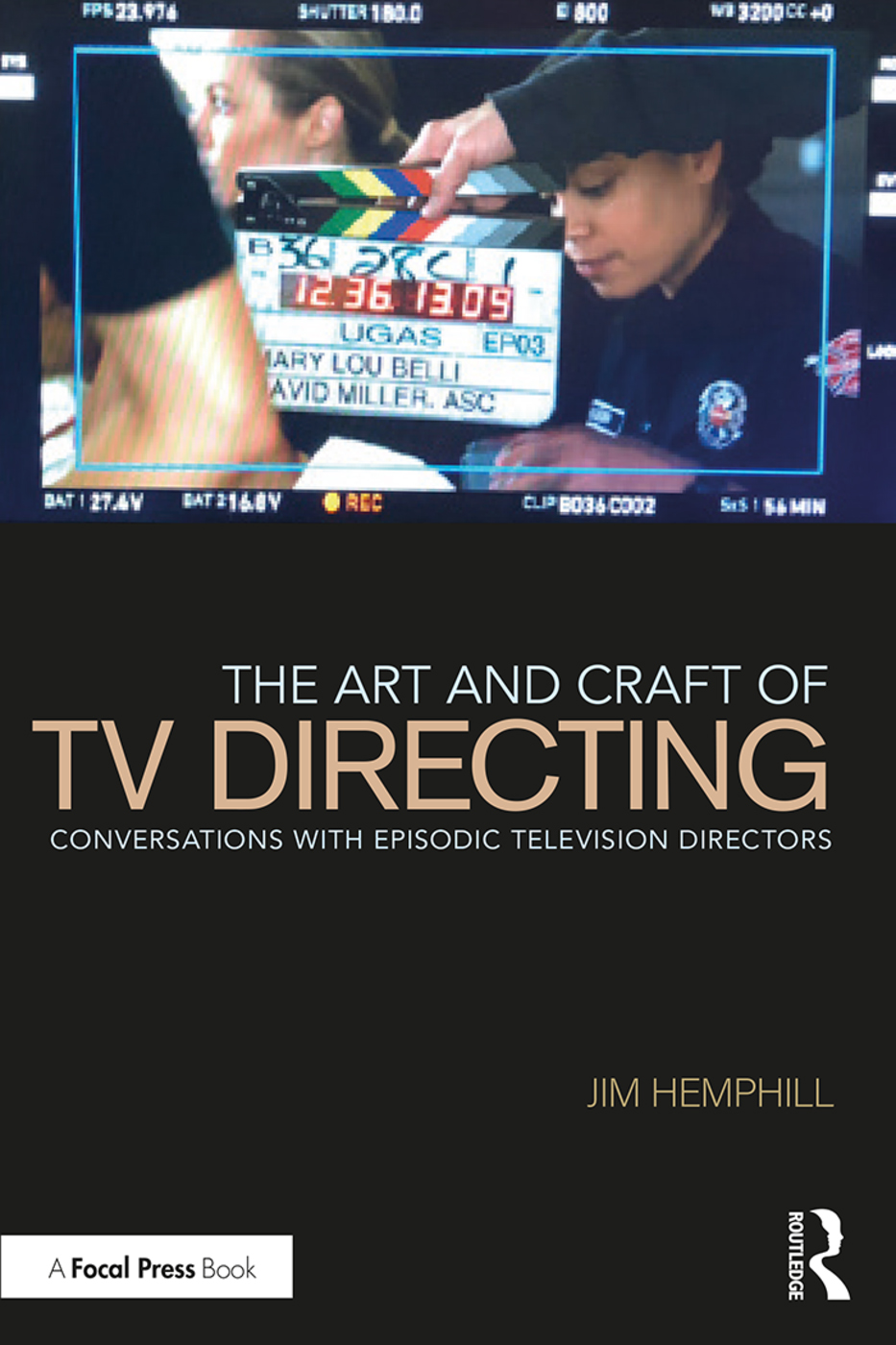
Contents
Landmarks
Pagelist
The Art and Craft of TV Directing
The Art and Craft of TV Directing offers a broad and in-depth view of the craft of TV Directing in the form of detailed interviews with dozens of the industrys most accomplished episodic television directors.
Author Jim Hemphill provides students with essential information on the complexities of working in episodic TV, highlighting the artistic, technical, and interpersonal skills required, and exploring a variety of entry points and approaches to provide a comprehensive overview of how to begin and sustain a career as a television director. The book discusses how to merge ones personal style with the established visual language of any given show, while also adhering to tight budgets and schedules and navigating the complicated politics of working with showrunners, networks, and producers. The book also features interviews with a range of directors, from feature directors who have moved into episodic TV (Kimberly Peirce, Mark Pellington) to directors who have made the transition from other disciplines such as acting (Andrew McCarthy, Lea Thompson), hair and makeup (Stacey K. Black), and stunts (David M. Barrett).
This book provides unprecedented access to the experiences and advice of contemporary working episodic television directors, and is an ideal resource for students studying television directing, early career professionals looking for advice, and working directors looking to make the transition from feature directing to episodic TV directing.
Jim Hemphill is an award-winning screenwriter and director whose films have screened at the Sundance Film Festival, American Cinematheque, and other prestigious international art houses and festivals. He has written about movies and television for numerous publications including American Cinematographer, Film Comment, Filmmaker Magazine, and Film Quarterly. He is a programming consultant at the Egyptian and Aero theatres in Los Angeles and works as a visual historian at the Academy of Motion Picture Arts and Sciences.
The Art and Craft of TV Directing
Conversations with Episodic Television Directors
Jim Hemphill

First published 2020
by Routledge
2 Park Square, Milton Park, Abingdon, Oxon OX14 4RN
and by Routledge
52 Vanderbilt Avenue, New York, NY 10017
Routledge is an imprint of the Taylor & Francis Group, an informa business
2020 Jim Hemphill
The right of Jim Hemphill to be identified as author of this work has been asserted by him in accordance with sections 77 and 78 of the Copyright, Designs and Patents Act 1988.
All rights reserved. No part of this book may be reprinted or reproduced or utilised in any form or by any electronic, mechanical, or other means, now known or hereafter invented, including photocopying and recording, or in any information storage or retrieval system, without permission in writing from the publishers.
Trademark notice: Product or corporate names may be trademarks or registered trademarks, and are used only for identification and explanation without intent to infringe.
British Library Cataloguing-in-Publication Data
A catalogue record for this book is available from the British Library
Library of Congress Cataloging-in-Publication Data
A catalog record has been requested for this book
ISBN: 978-0-367-15243-7 (hbk)
ISBN: 978-0-367-15245-1 (pbk)
ISBN: 978-0-429-05586-7 (ebk)
Typeset in Bembo
by codeMantra
Dedication
For Kelly Goodner, who reminds me that there are things in life even better than movies and TV.
A few years ago, when a feature film I had written and directed had been released on DVD and the work on it was more or less over, I thought back on the experience and had a minor epiphany. I calculated that the entire process of making my independent movie from writing it and putting together the financing to finding a cast and crew and shooting it, and then going through the arduous process of editing and taking the film around to festivals and finding distribution had taken a total of around six years. The epiphany came with the realization that in that six years of more or less constant pressure and stress, the only part of the process I truly enjoyed without reservation was the 12 days I spent on set shooting the movie. This led to a minor existential crisis, as I tried to figure out what I wanted to do with my life and career. Was this really any way to live, scrounging for years at a time for a few weeks of fulfillment?
My partner Kelly, whos also a filmmaker, saw me flailing and pointed out the obvious: there was a world perfectly suited to my interests and talents, and it wasnt independent films. It was episodic television, where so many of the things I hated about filmmaking were non-existent. The desperate, years-long attempts to get my movies seen, for example (which resulted in only the briefest theatrical runs before the films disappeared into obscurity as tiles on Amazon Video), wouldnt be a problem in television, where networks already have their own massive marketing and distribution apparatus. The need to carry the burden of the entire production on my shoulders would also vanish, thanks to the fact that in television so much of the responsibility lies with showrunners, producing directors, and other members of the regular staff. (I realize that this lack of authorship for the guest director is one thing that makes TV unappealing to many of my colleagues, but I find giving up some of the control and the headaches that come with it liberating.)
Best of all, television moves fast. For an hour-long show, you might get six or seven days of prep, seven or eight days of shooting, and a few days of editing, and the program is on the air within months. The job of the guest director in this medium is relatively simple, and focused entirely on the part of directing I enjoy the most: working with the actors and crew to tell a story. Once Kelly pointed all of this out, I decided to shift my emphasis from the world of movies to the world of television, and began the way I usually do: by plunging into research and reading everything I could find on the subject. What I discovered was that the unique characteristics of the art and craft of television directing were weirdly underexplored in film magazines and books; I found one excellent volume, Mary Lou Belli and Bethany Rooneys Directors Tell the Story, but not much else. This book, therefore, grew out of my desire to read it as much as my desire to write it. I wanted to speak with as many episodic directors as I could to learn about their process, how they got started, what they felt the pitfalls were for others hoping to pursue directing as a career, and what they looked for when, as producers, they were in a position to hire other directors.
I began contacting directors I admired (including Belli and Rooney) and asked everything I could think of about their work, learning along the way the extremely delicate balance that goes into episodic directing, a world in which you step onto a set filled with people who know their show better than you ever will and yet youre expected to take command. The directors in this book come from a variety of backgrounds; there are actors, editors, indie feature directors David Barrett even began as a stunt man and some of them have very different approaches to the same problems. (There may be some repetition in my questions from interview to interview, but the answers are remarkably varied.) The idea here is to present a wide variety of methods and philosophies, so that the reader can take whatever makes the most sense and assimilate it into his or her game plan. The idea is also to demystify the process, since a filmmaker who ignores the possibility of directing episodic television is closing him or herself off to some significant opportunities. There were over 400 scripted series on the air last year if you include streaming services thats a lot of hours of television that need directors. Even given those numbers, episodic TV is an extremely tough business to break into, but hopefully the insights shared by the directors in this book will save the reader a little bit of time and pain along the way and make that first job a little easier once its been procured.
Next page

